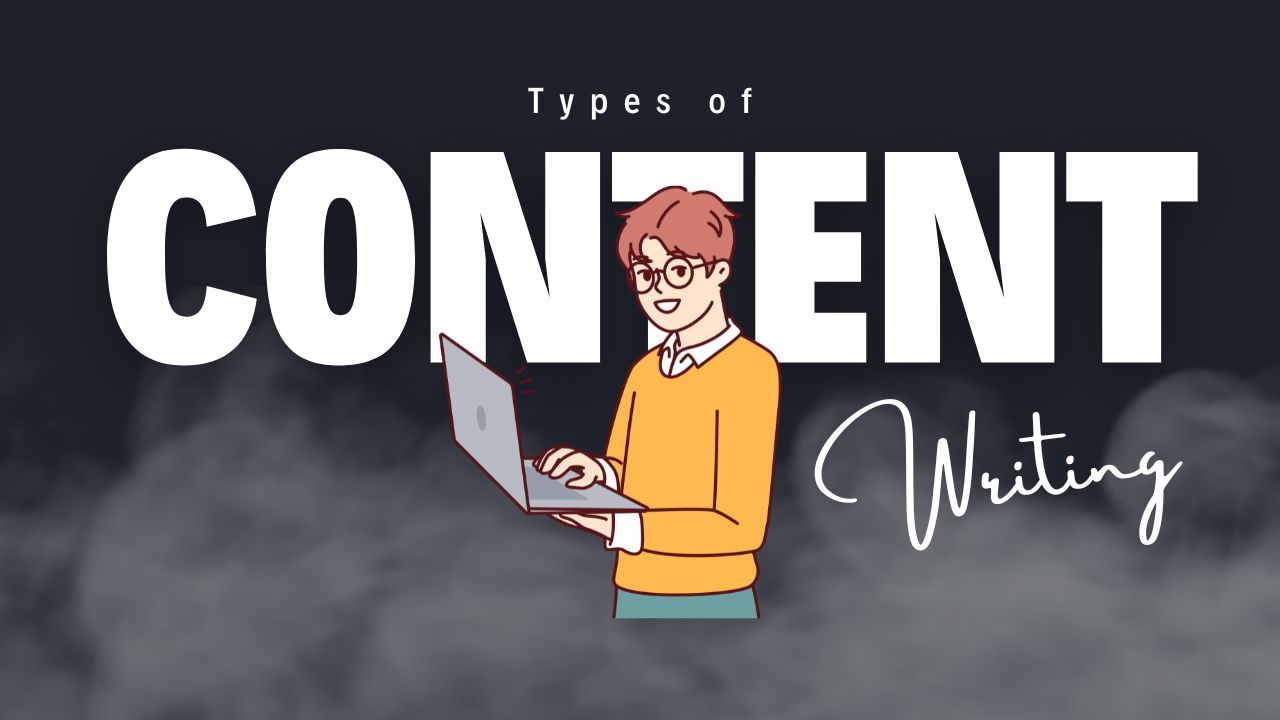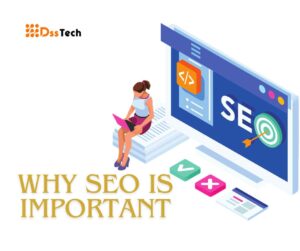Introduction
Content writing is everywhere on the internet. It is the words you read on websites, blogs, social media, and more. But not all content is the same. There are many kinds of content writing, each with its own way of doing things and goals. Understanding these types can help you create better content and reach your goals, whether you want to inform, persuade, or entertain your audience.
In this article, we will explore types of content writing. We will look at what makes each type unique and how you can use it effectively. From blog posts to social media updates, and product descriptions to email newsletters, each type of content has its own role to play. By learning about these different types, you can improve your writing skills and make sure your content stands out.
So, whether you are a beginner or an experienced writer, this guide will give you valuable insights into the world of content writing. Let’s dive in and discover how you can use these various types of content to connect with your audience and achieve your goals.

Blog Posts: The Heartbeat of Online Presence
Blog posts are a crucial type of content writing. They serve as a platform for sharing knowledge, opinions, and updates on a wide range of topics. Blog posts can vary in length, but they typically aim to inform or entertain the reader. What makes blog posts unique is their flexibility in tone and style. They can be casual and conversational or formal and authoritative, depending on the audience.
A well-written blog post engages the reader from the start with a compelling headline, provides valuable insights or information, and ends with a call to action or thought-provoking question. Unlike other forms of content, blogs often incorporate personal experiences and stories, making them relatable and engaging. By consistently publishing high-quality blog posts, writers can establish themselves as experts in their fields and build a loyal readership.

Product Descriptions: Crafting Persuasive Narratives
Product descriptions are short pieces of content designed to highlight the features and benefits of a product. What sets great product descriptions apart is their ability to create an emotional connection with the reader. Instead of simply listing features, a good product description tells a story about how the product can improve the customer’s life. It uses sensory language to help the reader visualize and feel the benefits.
For example, instead of saying “This chair is comfortable,” a compelling product description might say, “Sink into the plush cushions of this chair and feel your stress melt away.” Effective product descriptions also address potential objections and provide reassurances, such as guarantees or customer testimonials. By focusing on the customer’s needs and desires, writers can create product descriptions that are not only informative but also persuasive.

Social Media Posts: Short and Impactful Messages
Social media posts are a unique form of content writing that requires brevity and clarity. Each platform has its own style and character limit, so writers must be adept at crafting concise and engaging messages. The challenge lies in capturing the reader’s attention quickly in a crowded and fast-paced environment. Effective social media posts often include a hook, such as a question or bold statement, to draw the reader in.
They also use visuals, hashtags, and emojis to enhance the message and increase engagement. Social media writing requires an understanding of the platform’s audience and trends, as well as the ability to adapt the brand’s voice to fit the platform’s culture. By mastering these elements, writers can create social media content that drives interaction and builds a strong online presence.

Email Newsletters: Building Relationships with Readers
Email newsletters are a direct line of communication between a brand and its audience. They are used to share updates, promotions, and valuable content with subscribers. What makes email newsletters effective is their personal touch. Unlike public posts, emails feel more intimate and direct. A successful email newsletter starts with a catchy subject line that encourages the recipient to open the email.
The content should be well-organized, with a clear focus and engaging writing. Personalization is key; addressing the recipient by name and tailoring the content to their interests can significantly increase engagement. Newsletters should also include a clear call to action, whether it’s to read an article, make a purchase, or participate in an event. By consistently delivering high-quality content, newsletters can build trust and loyalty among readers.

White Papers: In-Depth and Authoritative Analysis
White papers are detailed reports that explore a specific topic in depth. They are often used in business and technical fields to provide authoritative analysis and insights. Writing a white paper involves thorough research and a structured approach. The content is usually formal and data-driven, with a focus on presenting evidence and logical arguments.
A well-crafted white paper not only informs but also persuades the reader by demonstrating expertise and credibility. It typically includes an introduction, a detailed discussion of the topic, and a conclusion with recommendations. Visual aids like charts and graphs can help to illustrate key points and make the content more engaging. By providing valuable information and solutions, white papers can help establish a brand or individual as a thought leader in their industry.

Case Studies: Real-World Examples of Success
Case studies are detailed accounts of how a product, service, or approach has been successfully applied in a real-world scenario. They are used to showcase the effectiveness of a solution and build credibility. A compelling case study tells a story, beginning with a problem or challenge faced by a client. It then describes the solution implemented and the results achieved.
Including specific data and testimonials from the client adds authenticity and impact. The narrative should highlight the benefits and unique aspects of the solution, making it clear why it was successful. By demonstrating real-world applications and outcomes, case studies can persuade potential customers of the value of a product or service.

How-To Guides: Step-by-Step Instructions for Success
How-to guides are instructional content designed to teach the reader how to accomplish a specific task or goal. They are highly practical and useful, providing clear, step-by-step instructions. What sets great how-to guides apart is their ability to break down complex processes into simple, manageable steps.
Each step should be clearly explained, often with accompanying visuals to enhance understanding. The language should be straightforward to follow, avoiding jargon or technical terms that might confuse the reader. A good how-to guide also anticipates potential difficulties and offers tips or solutions to overcome them. By providing practical advice and guidance, how-to guides can empower readers to achieve their goals and build confidence in their abilities.

Press Releases: Announcing News with Impact
Press releases are official announcements sent to the media to share news or events. They follow a specific format and style, with a focus on clarity and conciseness. A successful press release grabs the reader’s attention with a strong headline and leads with the most important information. The body of the release provides additional details, including quotes from key individuals and relevant background information.
The language should be professional and objective, avoiding promotional or subjective language. By adhering to these conventions, press releases ensure that the news is conveyed accurately and effectively. They are an essential tool for generating media coverage and public interest in a brand or event.

Web Content: Crafting User-Friendly Online Experiences
Web content includes all the text found on websites, from homepage copy to landing pages and FAQs. The goal of web content is to provide information, guide the user, and encourage specific actions, such as making a purchase or signing up for a newsletter. Effective web content is user-friendly, with a clear structure and easy-to-read format.
This includes using headings, bullet points, and short paragraphs to break up the text. The language should be straightforward and focused on the user’s needs. SEO (search engine optimization) is also crucial, as it helps ensure the content is easily found by search engines. By creating well-organized, informative, and engaging web content, writers can enhance the user experience and drive conversions.

Ebooks: Comprehensive Guides on Specialized Topics
Ebooks are longer pieces of content that provide in-depth information on a specific topic. They are often used to attract and interest potential customers. Writing an ebook involves thorough research, planning, and a clear structure and flow. Each chapter should build on the previous one, gradually expanding the reader’s understanding of the topic.
The writing style should be engaging and accessible, avoiding overly technical language. Visuals, such as images, charts, and infographics, can enhance the content and make it more engaging. Ebooks should provide significant value to the reader, offering insights, tips, and practical advice. By delivering high-quality, comprehensive content, ebooks can establish a brand as an authority in its field and build long-term relationships with readers.
Conclusion
Understanding the different types of content writing is important for creating engaging and effective content. Each type, from blog posts to eBooks, has its own unique style and purpose. You can better connect with your audience and achieve your goals by using the right type of content for your needs.
Good content writing involves knowing your audience, being clear and concise, and providing valuable information. Whether you are writing to inform, persuade, or entertain, choosing the right type of content is key.
By exploring and practicing these different forms of content writing, you can improve your skills and make your content more impactful. Remember, each type of content offers a different way to share your message and engage your readers. Use this knowledge to create content that stands out and delivers real value to your audience.




